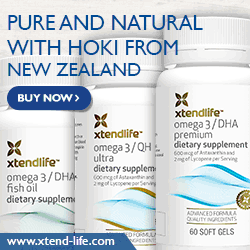My Blood Test – Annotated
A while back I discussed the value of regular blood testing, so I thought I’d share my latest results – annotated, to give a brief summary of what each measurement (or set of measurements) means. A blood test is basically a snapshot of what’s going on “under the hood,” so to speak. It can’t tell you everything, of course, but it can offer a lot of insights. For example, if you’re feel tired a lot of the time or fatigue easily, you should make sure that maybe you’re not mildly anemic, before hunting for a diet supp or other panacea in search of more “energy.”
So here we go…reference ranges (i.e., the range of values that are considered “normal” for 95% of healthy members of the population) are given in parentheses. In certain cases, reference ranges will vary by age, sex, race, and method used to perform the test).
Abbreviations: mg = milligram; ug = microgram (1/1,000 of a milligram); ng = nanogram (1/1,000 of a microgram); pg = picogram (1/1,000 of a nanogram); L = liter; dL = deciliter (1/10 of a liter), mL = milliliter (1/1,000 of a liter); IU = International Unit; mmol = millimoles (1/1,000 of a mole); umol = micromole (1/1,000 of a millimole).
Blood Chemistry:
Serum Glucose: 72 mg/dL (65-99 mg/dL)
This is a basic screen for diabetes. Since this is a fasting test, normal blood sugar levels should be within the reference range (they will be higher after eating). Pre-diabetes is defined as a fasting value of 100 – 125 mg/dL; diabetes is < 126 mg/dL. Mine is nice and low – but not too low (hypoglycemia isn’t good either).
Uric Acid: 2.5 mg/dL (2.4-8.2 mg/dL)
Uric Acid is a nitrogenous waste product produced during the breakdown of purines – which make up part of our DNA/RNA, as well ATP and other very biologically relevant compounds. We also eat them: animal protein foods contain higher amounts of purines. Caffeine and theobromine are also purines. Excess uric acid is associated with gout.
BUN: 20 mg/dL (5 – 26 mg/dL)
BUN stands for “blood urea nitrogen.” Urea is a waste product of nitrogen metabolism and is produced by the breakdown of protein. It is normally excreted by the kidneys in urine, so high levels are an early warning sign of possible kidney problems. Low values indicate the diet is too low in protein.
Serum Creatinine: 0.90 (0.50 – 1.50 mg/dL)
Creatinine is yet another waste product, that’s formed via the breakdown of creatine. Creatine (in the form of creatine phosphate) plays an important role in cellular energetics, as a phophate donor for the formation of ATP. As with BUN, high levels can indicate kidney problems.
BUN/Creatinine Ratio: 22 (8 – 27)
High values can indicate kidney failure or internal bleeding.
Serum Sodium: 139 nmol/L (135 – 145 nmol/L)
Serum Potassium: 4.2 nmol/L (3.5 – 5.2 nmol/L)
Sodium and potassium are electrolytes. These are required for proper functioning of your cells, so there are numerous problems associated with values that are too high or too low.
Serum Phosphorus: 4.0 (2.5 – 4.5 nmol/L)
Most of the body’s phosphorus is associated w/calcium in bone, so non-normal levels can be an indicator of bone problems and/or problems with parathyroid hormone, which regulates levels of calcium and phosphorus in the body.
Serum Protein: 6.9 g/dL (6.0 – 8.5 g/dL)
Serum Albumin: 4.3 g/dL (3.5 – 5.5 g/dL)
Total Globulin: 2.6 g/dL (1.5 – 4.5 g/dL)
A/G Ratio: 1.7 (1.1 – 2.5)
Serum albumin helps regulate blood volume and acts as a carrier for a variety of other molecules. Globulin represents a diverse class that can be divided up into 4 subtypes alpha 1/2, beta and gamma (antibodies are a type of gamma-globulin).
Total Bilirubin: 0.6 mg/dL (0.1 – 1.2 mg/dL)
Bilirubin is a breakdown product of heme (the iron-containing component of hemoglobin) – it’s responsible for the yellowish-color seen in bruises and jaundice. High levels can indicate liver disorders.
Alkaline Phosphatase: 63 IU/L (25 – 150 IU/L)
LDH: 150 IU/L (100 – 250 IU/L)
AST (SGOT): 24 IU/L (0 – 40 IU/L)
ALT (SGPT): 22 IU/L (0 – 40 IU/L)
GGT: 16 IU/L (0 – 60 IU/L)
Speaking of liver disorders, all of the above are various liver enzymes – elevated levels can occur with liver diseases, alcohol abuse and injury. Heavy exercise can sometimes cause one or more to be elevated as well. FYI, LDH = lactate dehydrogenase; AST = aspartate aminotransferase; ALT = alanine aminotransferase; GGT = gamma-glutamyl transpeptidase
Serum Iron: 131 ug/dL (35 – 155 ug/dL)
This measures circulating iron bound to transferrin – a carrier protein. Iron is needed by heme, to carry oxygen to cells and tissues. Low levels indicate a deficiency, which can cause anemia.
Lipids and other Cardiovascular Risk Factors:
Total Cholesterol: 141 mg/dL (100 – 199 mg/dL)
LDL Cholesterol: 68 mg/dL (0 – 99 mg/dL)
HDL Cholesterol: 64 mg/dL (40 – 59 mg/dL) – High
Total Cholesterol/HDL Ratio: 2.2 (0.0 – 4.4)
Triglycerides: 45 mg/dL (0 – 149 mg/dL)
Estimated CHD Risk: < 0.5 times average
Now I eat about a dozen whole eggs/week, as well as red meat and hard cheeses. Nonetheless, I also balance these sources of saturated fat with plenty of monounsaturated fats (largely from nuts and olive oil w/the occasional avocado) and polyunsaturated (fatty fish, liquid fish oil, grapeseed oil). So I’m not following American Heart Association “rules” as closely as I might…yet my triglycerides are waaaaay below what the AHA considers “normal” (under 150 mg/dL); my HDLs are excellent (60 mg/dL and above is associated w/reduced cardiac risk, and my LDLs are at the level approached by people on statin therapy.
Plasma Homocysteine: 3.8 umol/L (0.0 – 15.0 umol/L)
C-Reactive Protein, Cardiac: 0.40 mg/L (0.00 – 3.00 mg/L) (< 1.00 = low RR for CV event)
Both of these are additional measures of cardiovascular risk. Homocysteine is a naturally-occurring, reactive intermediate of methionine metabolism. C-reactive protein is produced by inflammatory processes.
Hormones:
DHEA-Sulfate 158 ug/dL (26 – 200 ug/dL)
Estradiol: 149 pg/ml (19 – 528 pg/ml)
Serum Testosterone: 52 ng/dL (14 – 76 ng/dL)
Free Testosterone: 0.5 pg/ml (0.0 – 2.2 pg/ml)
These are pretty self-explanatory: DHEA is an adrenal androgen that can serve as a precursor for testosterone (and estrogen) production. Estradiol is an estrogen. Serum testosterone for a woman – of course – is about 1/10th what it would be for a man.
Complete Blood Count:
WBC: 5.8 x 10E3/uL (4.0 – 10.5 x 10E3/uL)
RBC: 4.13 x 10E6/uL (3.80 – 5.10)
These are the numbers (in exponential form) of white and red blood cells, respectively.
Hemoglobin: 13.9 g/dL (11.5 – 15.0 g/dL)
Hematocrit: 40.5% (34.0% – 44.0%)
Hemoglobin is the oxygen-carrying protein in red blood cells; hematocrit is the percentage of blood volume taken up by red blood cells. Low measurements are an indicator of anemia.
MCV: 98 fL (80 – 98 fL)
MCH: 33.5 pg (27.0 – 34.0)
MCHC: 34.3 g/dL (32.0 – 36.0 g/dL)
RDW: 14.0% (11.7% – 15.0%)
MCV = mean corpuscular volume (i.e., the average red blood cell volume) in femtoliters (one-quadrillionth of a liter). MCH = mean corpuscular hemoglobin (the amount of hemoglobin in an average red blood cell). MCHC = Mean corpuscular hemoglobin concentration (the average concentration of hemoglobin in a red blood cell). RDW = Red cell distribution width (a calculation of the variation in red blood cell size)
Platelets: 214 x 10E3/uL (140 – 415 x 10E3/uL)
Neutrophils: 54% (40% – 74%)
Lymphs: 37% (14% – 46%)
Monocytes: 8% (4% – 13%)
Eos: 1% (0% – 7%)
Basos: 0% (0% – 3%)
Low or high platelet counts indicate possible problems with bleeding or clotting. Neutrophils, lymphocytes, monocytes, eosinophils and basophils are all white blood cell types…in the above, they’re given as percentages of the total white blood cells; below, they’re listed in absolute amounts.
Neutrophils (Absolute): 3.1 x 10E3/uL (1.8 – 7.8 x 10E3/uL)
Lymphs (Absolute): 2.1 x 10E3/uL (0.7 – 4.5 x 10E3/uL)
Monocytes (Absolute): 0.5 x 10E3/uL (0.1 – 1.0 x 10E3/uL)
Eos (Absolute): 0.1 x 10E3/uL (0.1 – 1.0 x 10E3/uL)
Basos (Absolute): 0.0 x 10E3/uL (0.0 – 0.2 x 10E3/uL)
So there you have it: I’m relentlessly healthy, and my apparent cardiovascular risk is low…and since I’m also relentlessly middle aged, this is good to know.
This really only scratches the surface when it comes to interpreting blood tests. But the Life Extension Foundation and Lab Tests Online are good places to start if you’re interested in reading more about different tests and what they’re good for.




July 10, 2008
A very interesting blood test we did on our 3yr old was a food intolerance IgG test. The test involved testing 250 different foods, for intolerance. Not only do food intolerance’s affect your day to day life but they may inhibit weight reduction goals.
The interesting aspect about IgG reactions is that they are delayed (as opposed to IgE reactions which are immediate). Gas, bloating, headaches, acne, weight gain etc. So you may never know what foods affect you.
We suspected our 3yr had some intolerance’s (shiners under the eyes) and when we received the results we were quite surprised.
She was severely intolerant to almonds, blueberries, peanuts, raspberries, strawberries. She was moderately intolerant to banana, kiwi, lamb, pork, quinoline yellow and sugar.
She loves blueberries and strawberries, and PB&J so…. in a nutshell sometimes healthy food may not be that healthy for You.
Healthy eating is a priority in our family so we thought we were feeding our daughter good nutritious food. We were – but – she had a hidden intolerance, that threw her immune system into overdrive. Obviously these “healthy” foods were not suited for her.
Interestingly enough blueberries and various other low GI fruits are typically staples on a fat loss program!
Given these surprising results I think I’m going to get the test done for myself.
The website is: http://www.hemocode.com/
Pretty interesting stuff!
Take care, keep well!
June 8, 2009
oookkkk … get a life
June 8, 2009
I have one: a very active and healthy one, in fact. Problem?
May 7, 2010
Excellent post i am sure that i will come back here soon